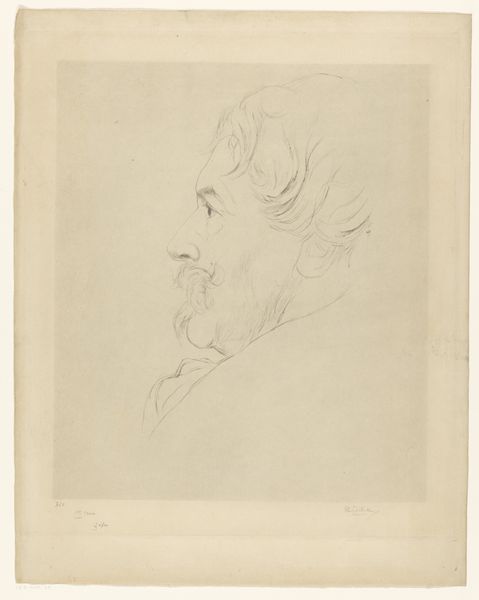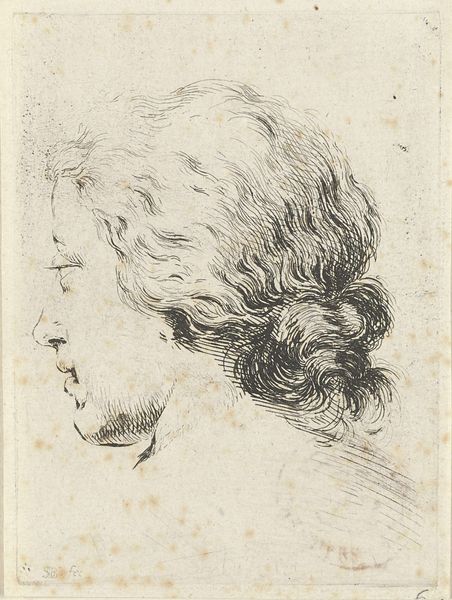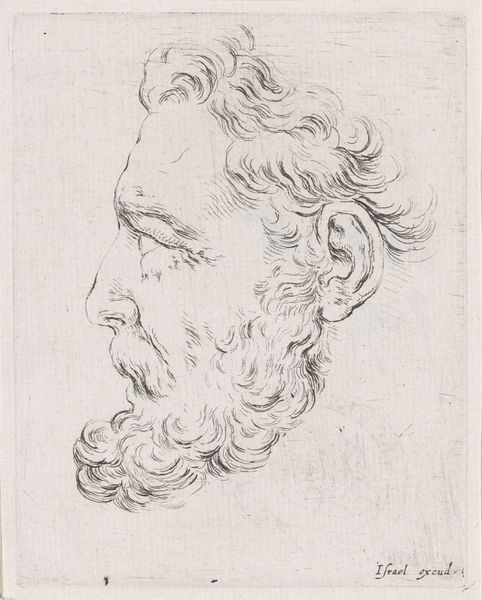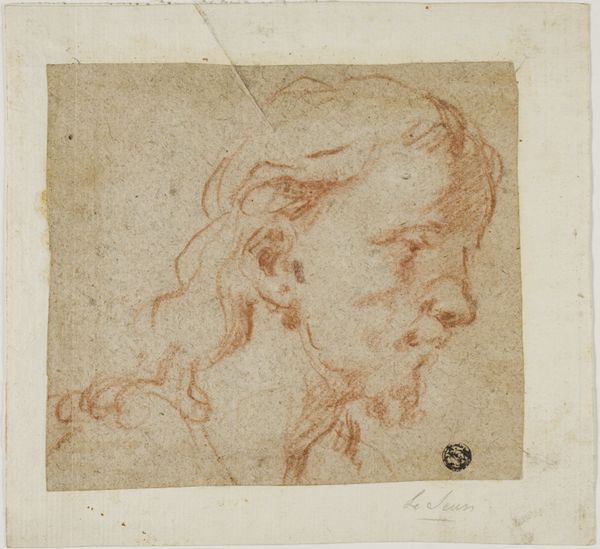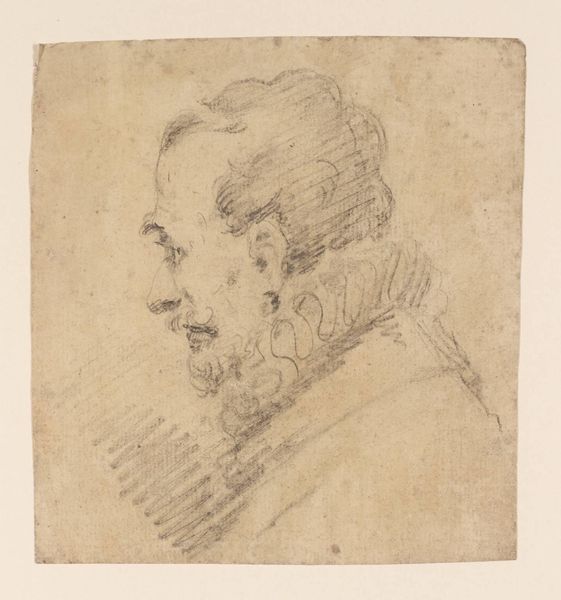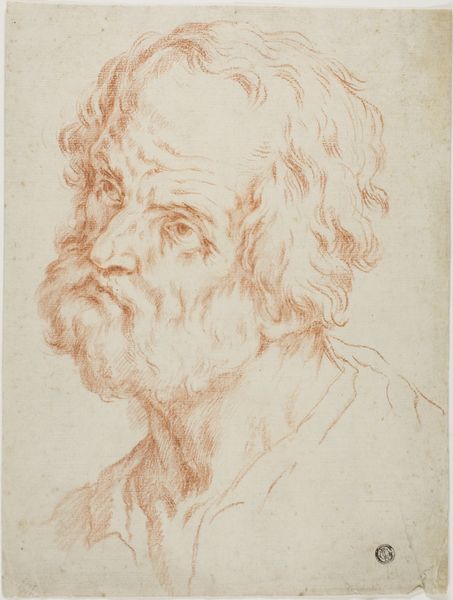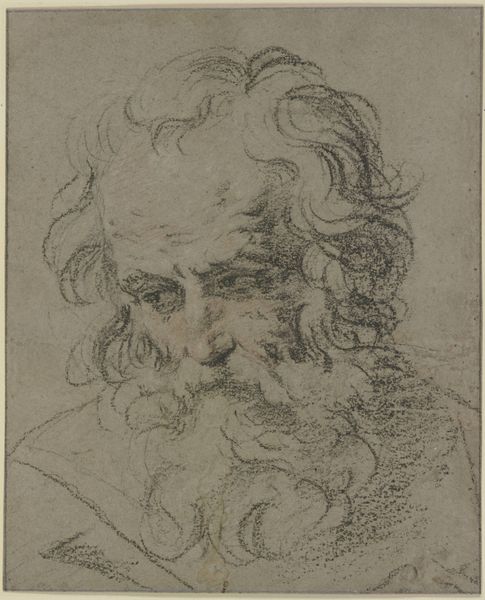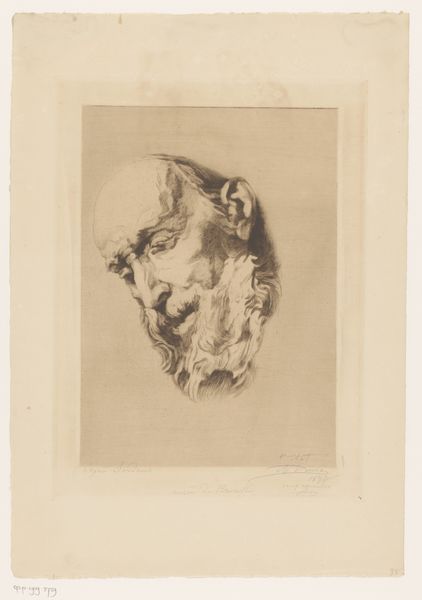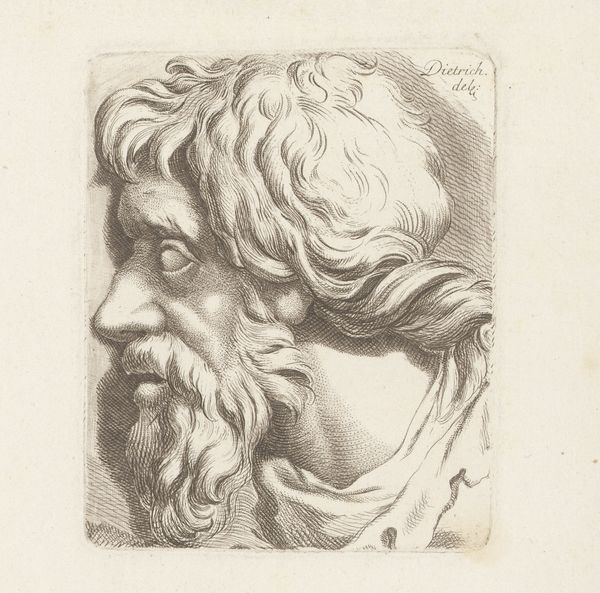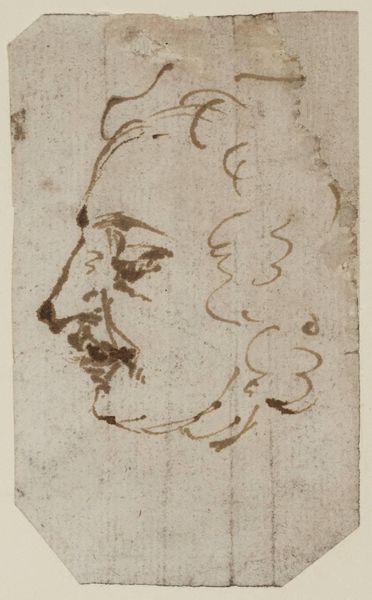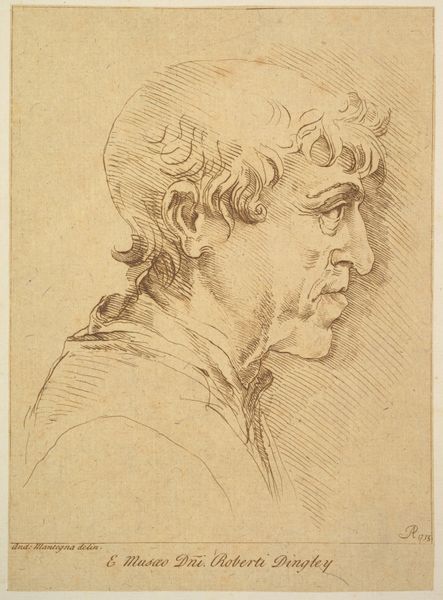
drawing, pencil
#
portrait
#
pencil drawn
#
drawing
#
aged paper
#
toned paper
#
light pencil work
#
pencil sketch
#
old engraving style
#
personal sketchbook
#
pencil
#
sketchbook drawing
#
pencil work
#
sketchbook art
Dimensions: height 198 mm, width 199 mm
Copyright: Rijks Museum: Open Domain
Curator: This delicate drawing is a study for a portrait of E. de Goncourt by Philip Zilcken, dating from between 1890 and 1896. It resides here at the Rijksmuseum. What strikes you initially about this sketch? Editor: A sort of wistful quiet hangs around it. You can almost feel the scratch of the pencil on the paper, like a whisper from another century. There's a softness, despite the clear lines. Curator: Indeed, the material handling speaks volumes. The choice of pencil on what appears to be toned paper underscores Zilcken's academic training, a deliberate move away from grand, imposing oils toward a more accessible medium. Notice the paper itself – aged, likely handmade, contributing to the overall feel. Editor: I see it. It makes me think about the hours Zilcken might have spent just...observing. Trying to capture a certain something, perhaps the essence of the sitter, de Goncourt. The fleeting, human moment. Curator: Absolutely, and if you consider the socio-political climate...The availability of paper and pencils meant art production wasn't limited to elite patronage. This study signifies the changing dynamics within artistic production, reaching a potentially wider audience. A preliminary sketch meant for personal insight can become art in itself. Editor: So, this isn't just a discarded step on the way to something "greater", but its own valuable thing. It’s funny, you know? I imagine de Goncourt, surrounded by so much 'proper' art of his era and the little pencil whispers on the aged paper might actually convey more of him! Curator: Precisely, its beauty lies not just in its formal qualities but within its humble means of production, offering an intimate snapshot of both artist and subject through the lens of material culture. Editor: You are right. Now, I look at it one last time and the whole image is transformed with a much stronger story: art for the art's sake. Curator: I think we both unveiled how artistic practices are linked inextricably to their materials and also deeply personal narratives, each playing an invaluable role to discover more about art history.
Comments
No comments
Be the first to comment and join the conversation on the ultimate creative platform.
